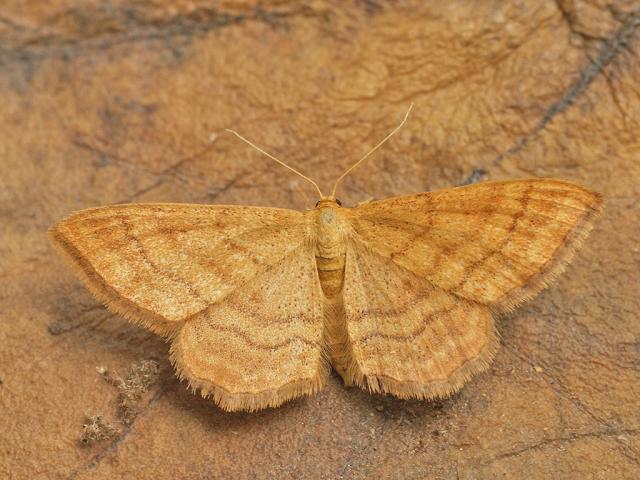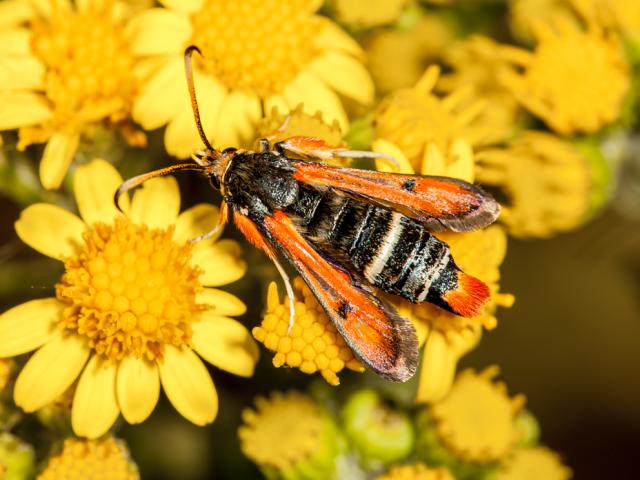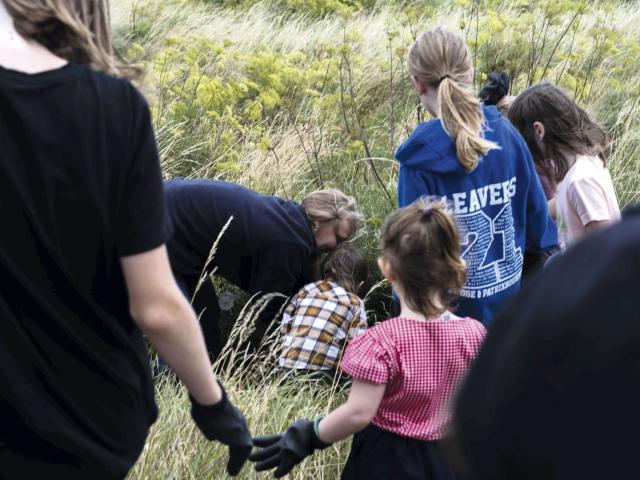Our largest-ever area-specific moth project is drawing to a close this year. Emma Pestridge, Engagement Officer for Kent’s Magnificent Moths, reflects on its successes.
Kent’s Magnificent Moths, a project supported by the National Lottery Heritage Fund, is now in its final year. Over the last three years the team has focused its conservation efforts on eight priority moth species that make their home in Kent’s wide variety of habitats. Rare and threatened moth species can be found across the UK, but did you know Kent has more than anywhere in the UK?
Alongside the extensive conservation work, the project team has worked with local community groups and schools to establish in-depth engagement throughout the landscapes. We have also been fortunate to partner up with many Kent organisations throughout the three years of the project, such as White Cliffs Countryside Partnership, Windmill Community Gardens and The Crab Museum, as well as a local group of the RSPB.
We have hosted a plethora of events including a 48-hour conservation festival, engaging more than 200 families to make a difference throughout Thanet using paper-cut art sculptures by artist Ed Harrison. We also hosted action talks by local climate groups, and intimate musical performances to inspire the local community about the need to care for their environment and its insects.
We have aided in a moth-inspired litter pick along Tankerton Slopes in north Kent, collecting 12 large bags of rubbish along the way! In unison with the litter pick, individuals identified the intriguing frass volcanos left by the Fisher’s Estuarine Moth, a key surveying method for identifying populations. The Kent’s Magnificent Moth team was able to show more than 40 people the importance of these slopes in the project’s first year, and have repeated this level of engagement in each year since.

Signs of success
The project has been able to help improve land management, moving to a wider landscape approach to ensure habitats are suitable for the large array of specialised moth species in Kent. This has improved connectivity throughout the county to increase potential dispersal to new breeding areas for our priority species. Our monitoring has revealed that three of these moths – Sussex Emerald, Fiery Clearwing and Bright Wave – have significantly expanded their breeding area by colonising inland habitats, potentially because summer drought conditions are increasingly impacting coastal habitats.

Over the three years of the Kent’s Magnificent Moths project, we have upskilled volunteers in surveying methods. Training volunteers in egg surveys has increased Kent’s Fiery Clearwing egg counts by 82% in three years. In 2023, 35 volunteers helped us to count 5,667 Fiery Clearwing eggs, compared to 975 eggs counted by one Butterfly Conservation staff member in 2020, before the project started.

As well as training our volunteers to boost recording in Kent, we have carried out various community outreach events. The critically endangered Black-veined Moth has been featured in tasty biscuit form during our winter task days, and at Ashford we ran events with Natural England and Kent Wildlife Trust. Kent is home to all 12 of this moth’s UK metapopulations (of a group of spatially separated populations of the same species which still interact on some level), which benefited from volunteer days to remove thorny scrub creeping into their chalk grassland, increasing suitable habitat. Their larvae were discovered in new fields during volunteer search days, confirming new breeding areas, and even appeared in the regional news media.

The rarity of other species is closely linked to their rare caterpillar foodplant. So, volunteers, community groups and plant nurseries have grown hundreds of wildflowers for Fisher’s Estuarine, White-spotted Sable and Marsh Mallow Moth. This has increased viable habitat to enable moth populations to increase. The Marsh Mallow Moth now has more than 50 people involved in growing hostplants for it, with over 2,000 Marshmallow plants now thriving throughout the moth’s landscape, ready for the larvae to nibble on their roots!
A lasting difference
This project has been life-changing for moth conservation in the county of Kent. It has shown how building relationships over the length of the project with the same organisations and schools, rather than trying to reach as many individuals as possible independently, has created a sense of community and ownership, instead of being a fleeting passion. It has created a true interest among groups that is not just a flash in the pan.
The longer-term engagement also means there is an opportunity for land managers to understand if their habitat improvement work has been successful, so they can then build it into their long-term planning. Kent’s Magnificent Moths has created support and outcomes that will live on long after the project ends.
Did you know?
Nowhere has more UK BAP (Biodiversity Action Plan) priority moth species than east Kent. These species are identified as the most threatened and require conservation action.
Emma Pestridge
Engagement Officer for Kent’s Magnificent Moths, Butterfly Conservation


